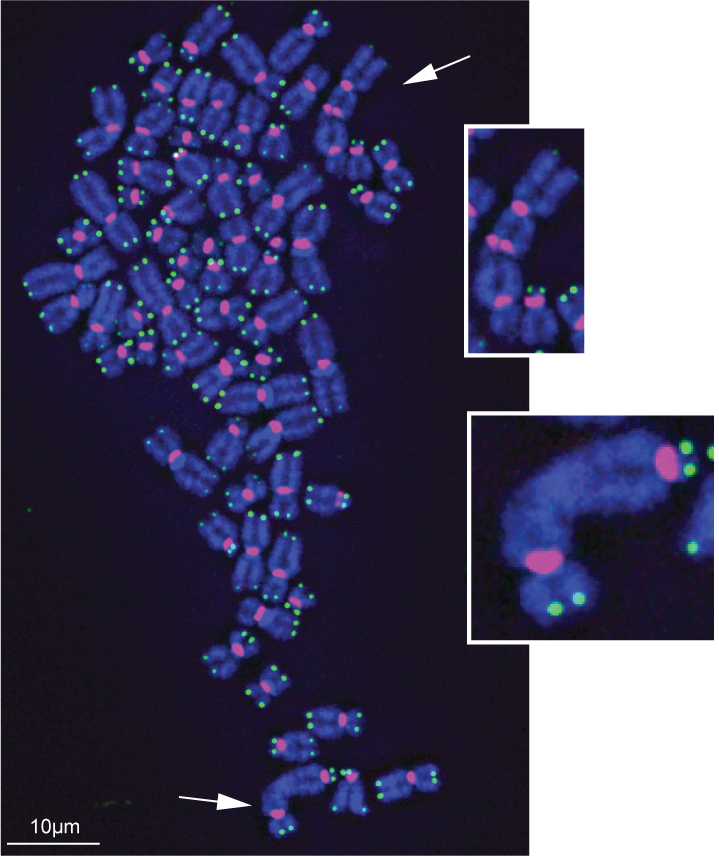ABOVE: Human cancer cells with damaged telomeres form chromatin bridges between daughter cells when going through mitosis. Chromatin is stained in blue and telomeres in green.
FOUQUEREL ET AL.
To see how stress on telomeres can lead to cell aging and death, researchers put oxidative stress on human cancer cells by adding light-activated molecules that release free radicals that bind to telomeres. The telomeres got shorter and stuck to each other after the treatment, the authors reported Tuesday (May 14) in Molecular Cell. When the cells with damaged telomeres tried to divide, they formed chromatin bridges between daughter cells, which were not able to complete cell division properly and eventually died through apoptosis.
“If we can understand what causes telomere shortening and how cells compensate for that, then we’ll be in a better position to design intervention strategies that protect telomeres in healthy cells and target telomeres in...
E. Fouquerel et al., “Targeted and persistent 8-oxoguanine base damage at telomeres promotes telomere loss and crisis,” Molecular Cell, doi:10.1016/j.molcel.2019.04.024, 2019.

Interested in reading more?






